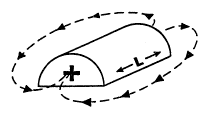Note: Descriptions are shown in the official language in which they were submitted.
:;
SPE:CIFICATIONS 7
-` This invention is a method and apparatus that relates to a
manually, operable, super, powerful, permanent magnetic releasable
fastener for connecting first and second objects.
. . .
It i8 commonly known in a heavy duty application for connecting
first and second objects to use a nut and bolt type device,
electromagnetic type device or permanently affixed by alternative
means. These types of fastening devices however, are inefficient
should the dismantlement of first and second objects be required.
In terms of labour costs (ie. time and wages) for both assembly and
dismantlement the ~avings would be substantial using the magnetic
releasable fastener described herein.
I have found the use of permanent magnets, in the invention herein
being requested, would revolutionize many disadvantages and
inefficiencies commonly known in today~s commercial market relating
to scaffolding, tables, stages, concessions, portable structures of
any type as well as many new and exciting additional applications.
The magnetic releasable fastener would not only have heavy duty
applications but also light weight applicatior.s. Manual operation
is all that is required to fasten and/or release hundreds of pounds
of holding force in a matter of seconds. It is not limited to
manual operation or any specific objects needing to be connected.
The invention, herein being requested for patent approval,
comprises of an apparatus and method for releasably connecting
first and second objects magnetically. Wherein, two half cylinder
shape permanent magnets, each magnet charged having the magnetic
lines of forc~ travelling lengthwise (Fig. 1). Magnetically
attached flat length side of each(Fig. 2 and Legend F.L.S.) to
the flat length side of another (Fig. 2a). Wherein, the North
. ~,
magnetic field of one magnet faces the opposite (South) direction
to that of the other magnet thereby, taking shape of a whole
cylinder (Fig. 3). This symmetrical arrangement of said two
permanent magnets causes an equal proportion of opposite polarities
; : ,
`:~<, : ~
SPECIFICATIONS con~ 8 ~ 7
to arise outward from each distal end. A first member (Flg. 4)
made of non-magnetic durable material may include a proximal end
(Fig. 4 and ~egend P.E. on 1st M.) of which is suitably connected
to the first object and a distal end that will include at least one
elongated cylindrical shaft. The said two magnets symmetrically
arranged are suitably enclosed and/or positioned within the said
shaft (refer to Note: dotted line) causing and equal proportion of
North and South magnetic fields to arise outward from its distal
., ~,
end face (Fig. 4 and Legend D.E.F.). A second member (Fig. 5) made
of non-magnetic durable material may include a proximal end (Fig.
, . :
5 and Legend P.E.) of which is suitably connected to the second
. ::
object and a distal end including at least one corresponding -~
cylindrical hole for receiving the insertion of said shaft (Fig.
6). The depth of the said shaft and said hole are equal for a
precision fit. Said two magnets symmetrically arranged are also
enclosed and/or positioned (refer to Note: dotted line) within the
inner distal end face (Fig. 5 and ~egend D.E.F.) of second member
causing an equal proportion of North and South magnetic fields to
arise outward from its said inner distal end face. The cylindrical
nature at each distal end of said first and second members is
,~.
provided to allow radial movement between each once the said shaft
has been inserted into the said hole. The fastening position
between first and second members is accomplished by aligning
opposite polarities of North and South magnetic fields when
inserting the said shaft into the said corresponding hole. By
aligning the North magnetic field arising outward from half of the
distal end face of said shaft to the South magnetic field arising
outward from half of the inner distal end face of said hole, and
each other half the same, causes an attracting magnetic field
drawing inward the insertion of said shaft which is then fastened.
Releasing position is accomplished by radially turning the inserted
said shaft out of the attracting magnetic field into an opposing
magnetic field (For example: North to North, South to South
polaritie~) forcing the said shaft outward from within the said
hole.
::
